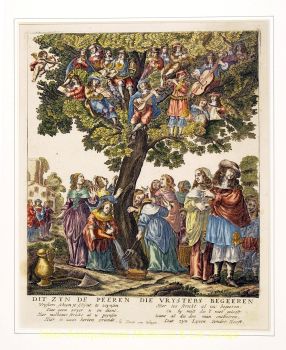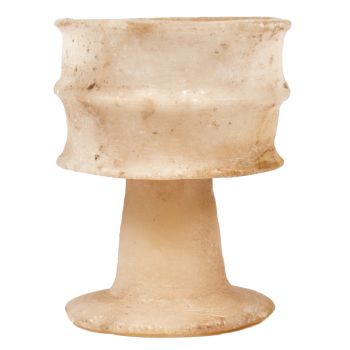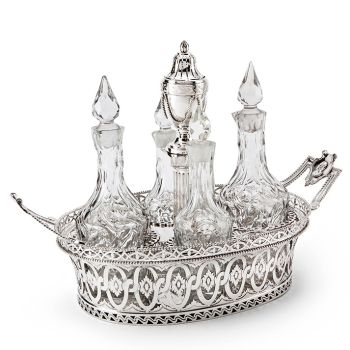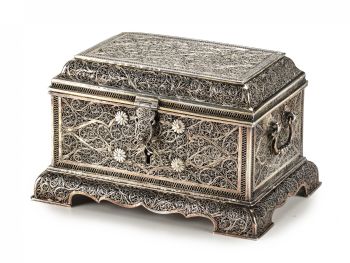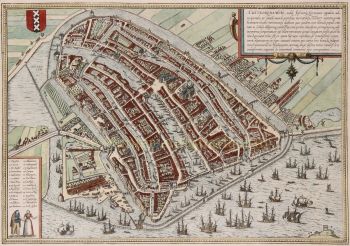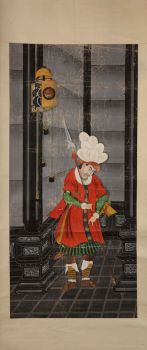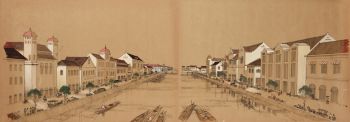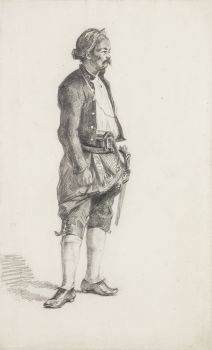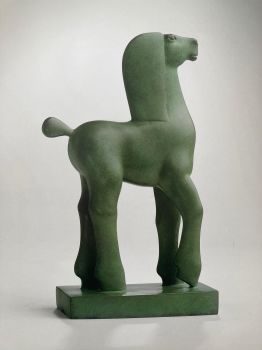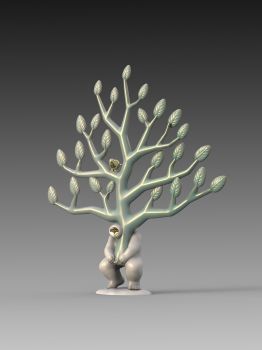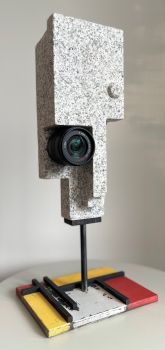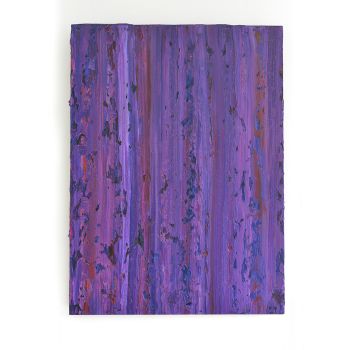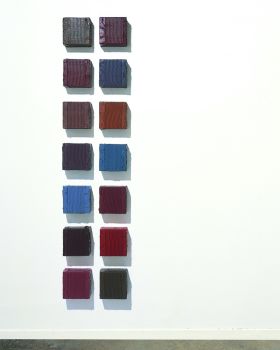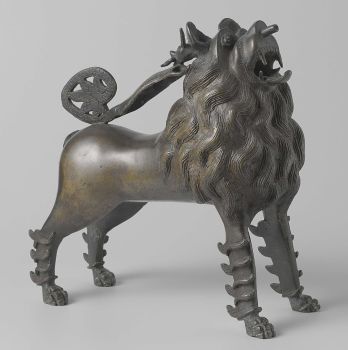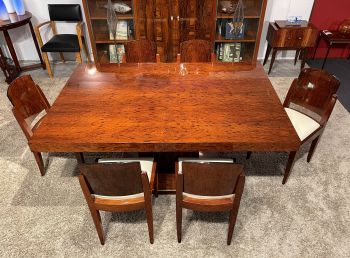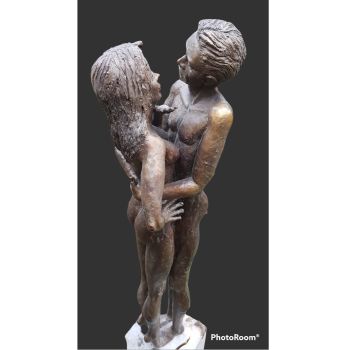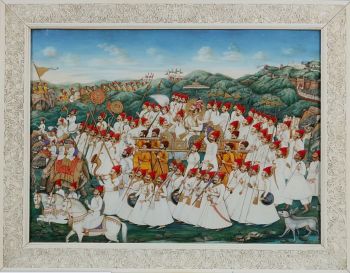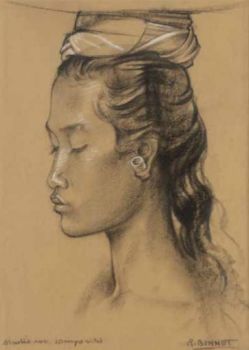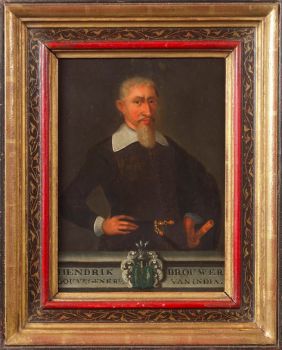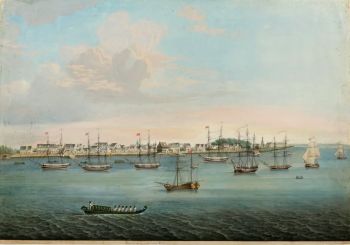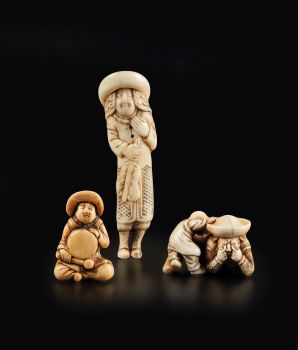UM MODELO JAPONÊS DE UM NORIMONO, UM PALANQUIM 1650 - 1700
Artista Desconhecido
Zebregs & Röell - Fine Art - Antiques
- Sobre arteA JAPANESE MODEL OF A NORIMONO, A PALANQUIN
Late 17th century
The fully equipped and working palanquin in black lacquer ground decorated in gold hiramaki-e, metal and tissue
H. 23 x L. 25.8 x D. 18.6 cm
Yoke L. 68 cm
Note:
A rare model of a Japanese palanquin, norimono. Another one is in the Ethnographic Collection of the National Museum of Denmark and one in the Musée des Beaux-Arts de Brest. Between 1641 and 1858 the Dutch were the only Westerns allowed in Japan. Like the local Japanese rulers, the Dutch had to make a yearly voyage from their settlement in the bay of Nagasaki to the court of the Shogun in Edo (Tokyo) to pay their respect and bring presents from the West. This was the only time in the year the Dutch were allowed off their small island Deshima. They travelled in norimono like this model one carried by four men. Sometimes a hole was made in the foot-end of the palanquin allowing the Dutchmen to stretch their legs. The Japanese thought the Dutch could not bend their knees and therefore sat on chairs. These models were presented during the hina matsuri, the dolls festival, as the vehicle of a lord’s spouse. - Sobre artista
Pode acontecer que um artista ou criador seja desconhecido.
Algumas obras não devem ser determinadas por quem são feitas ou são feitas por (um grupo de) artesãos. Exemplos são estátuas dos tempos antigos, móveis, espelhos ou assinaturas que não são claras ou legíveis, mas também algumas obras não são assinadas.
Além disso, você pode encontrar a seguinte descrição:
•"Atribuído a …." Na opinião deles, provavelmente uma obra do artista, pelo menos em parte
• “Estúdio de…” ou “Oficina de” Em sua opinião um trabalho executado no estúdio ou oficina do artista, possivelmente sob sua supervisão
• "Círculo de ..." Na opinião deles, uma obra da época do artista mostrando sua influência, intimamente associada ao artista, mas não necessariamente seu aluno
•“Estilo de…” ou “Seguidor de…” Na opinião deles, um trabalho executado no estilo do artista, mas não necessariamente por um aluno; pode ser contemporâneo ou quase contemporâneo
• "Maneira de ..." Na opinião deles, uma obra no estilo do artista, mas de data posterior
•"Depois …." Na opinião deles uma cópia (de qualquer data) de uma obra do artista
• “Assinado…”, “Datado…” ou “Inscrito” Na opinião deles, a obra foi assinada/datada/inscrita pelo artista. A adição de um ponto de interrogação indica um elemento de dúvida
• "Com assinatura ….”, “Com data ….”, “Com inscrição ….” ou “Tem assinatura/data/inscrição” na opinião deles a assinatura/data/inscrição foi adicionada por outra pessoa que não o artista
Você está interessado em comprar esta obra de arte?
Artwork details
Related artworks
- 1 - 4 / 12
Artista Desconhecido
The Stamford Raffles Secretaires.1800 - 1813
Preço em pedidoZebregs & Röell - Fine Art - Antiques
1 - 4 / 24Artista Desconhecido
The bell of the VOC fortress in Jaffna, Sri Lanka1747
Preço em pedidoZebregs & Röell - Fine Art - Antiques
 Com curadoria de
Com curadoria deDanny Bree
Shiba Kokan
Pintura de um holandês fantásticoearly 19th
Preço em pedidoZebregs & Röell - Fine Art - Antiques
1 - 4 / 24- 1 - 4 / 24
Artista Desconhecido
IMPORTANTE E RARA GRANDE PINTURA DE 'ESTILO DE EMPRESA' ÍNDIO EM MARFIM QUE REPRESENTA UM DESFILE1850 - 1900
Preço em pedidoZebregs & Röell - Fine Art - Antiques
 Com curadoria de
Com curadoria deDanny Bree
Artista Desconhecido
Holandeses em miniatura (Netsuke)1700 - 1900
Preço em pedidoZebregs & Röell - Fine Art - Antiques
Artista Desconhecido
Holandeses em miniatura18th century
Preço em pedidoZebregs & Röell - Fine Art - Antiques
1 - 4 / 12


